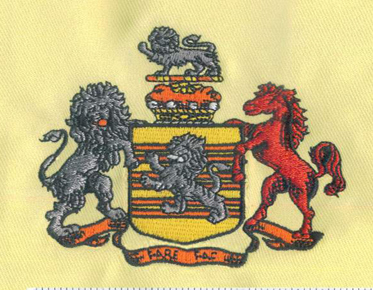The Difference Between Chenille And Regular Embroidery | Embroidery Digitizing Services
Chenille and embroidery are two very different techniques, but they go together perfectly. Many designs use both to differentiate the two stitches and add interest to their design. These custom chenille patches are also designed with a signature look and feel. They are made with great craftsmanship that is undisputed. This makes them perfect souvenirs for events such as fundraisers, church activities, corporate events and company parties. This content also has some reference value for Eagle digitizing.
Our
designers use creativity and ideas to create the most glamorous designs on PVC
patches, embroidery patches, Chenille patches, key chains, hats and other
clothing, custom T-shirts and more.
First, let me explain what a Chenille patch is and why it is different from an embroidery patch.
What is a Chenille patch?
Chenille material is sewn to the bottom with a special device that pulls threads to create a carpeted, raised, textured surface.
Once the Chenille material is ready, it is used for patching. They give the patch a unique look and feel, and are very luxurious and soft.
The Chenille patch will automatically take you back to school. I remember athletes, older classmates and marching band members in Letterman jackets. Chenille is commonly used for letter patches, but that's not the only reason to show off this particular type of patch.
The difference between embroidered patch and Chenille patch
Here are some differences between embroidery and Chenille patches.
Craft of sewing
The difference is Chenille sewing. The sewing process of Chenille embroidery is different from traditional embroidery. Chenille embroidery machines don't even have spool.
Design and Application
Chenille also differs from traditional embroidery in its design application. Since most of the work was not done directly on the garment, the design was done on a fabric background called thin pine felt. Rinse it off and sew it on like a patch.
Differences in needle count design
Analysis of embroidery and Chenille patches showed that the Chenille patches were more cost effective. Chenille sews very slowly, averaging 500-700 SPM. However, Chenille yarns have considerable bulk. With just a few stitches, you can easily cover a larger area than traditional embroidery.
In addition, the Chenille line is thick, making it almost impossible to break the line. This is because threads are stronger than threads. As a result, the manufacturing process is almost unattended.
Differences in usage and appearance
Embroidered patches are the game enthusiasts' choice. They are also worn by the military, Marines and emergency services. Embroidered patches are for those seeking a classic look. Hardback editions feature intricate images or insignia with tough embroidery and precise inscriptions.
Chenille
has a vintage feel but also a caterpillar-like texture. Fluffy, fluffy.
Especially for students and athletes.
Logo
design and effect
The biggest difference between an embroidery patch and a Chenille patch is the design and effect of the logo. Embroidery patch with 3D effect logo. Unable to display small logo design.
In addition, it is a design that makes heavy use of embroidery fibers. However, it can form a backdrop full of dedicated Chenille patches, epic three-dimensional logos and embroidery. However, the minimum embroidery letter height is 5mm.
When
you order Chenille patches from a reputable company, you will get Chenille
patches that are designed to be durable and easy to use. The same applies to
embroidered patches. A good Chenille patch designer offers strong, flexible and
professionally designed embroidered patches.



